Understanding Texas Weather and Its Impact on Roofing
The Unique Challenges of the Texas Climate
Texas weather is as intense as it is unpredictable. The sweltering summer heat can hover well over 100°F, baking everything in its path, including your roof. In winter, temperatures may plunge suddenly, creating a cycle of expansion and contraction that can weaken materials over time. Add in the windstorms that sweep across the plains and the occasional hailstorm, and it’s clear that roofing in Texas isn’t for the faint of heart. A roof in this state has to endure extremes that test its resilience every day.
Beyond durability, your roof must also offer comfort. The relentless sun heats up your home, making energy efficiency a necessity. A poorly chosen or maintained roof can turn your home into a sauna, driving up energy bills. With Texas’s mix of harsh elements, selecting the right roofing material is less about aesthetics and more about survival.
How Heat and UV Rays Affect Roofing Materials
The unyielding Texas sun doesn’t just warm your home; it assaults your roof with UV rays that can degrade materials over time. Asphalt shingles, for instance, can crack or lose granules under prolonged exposure, shortening their lifespan. Even sturdy materials like tile can suffer fading or discoloration. Metal roofing, known for its reflective properties, is a great option for combatting UV damage, but even it requires proper installation to handle heat expansion.
Texas heat also exacerbates thermal cycling, where materials expand during the day and contract at night. This constant movement can lead to splits and leaks if the roof isn’t constructed with flexible, durable materials. Choosing UV-resistant roofing or applying reflective coatings can make all the difference in keeping your roof intact and your home cooler.
Storm Season: High Winds, Hail, and Torrential Rain
Texas storms can be relentless. High winds tear shingles from rooftops, hailstones can dent or puncture materials, and torrential rains expose any weak points in your roof. Metal roofs excel in these conditions, withstanding wind speeds up to 140 mph. Tile roofing, while heavier, offers excellent hail resistance but may require reinforced framing.
Proper installation and maintenance are crucial for storm readiness. Loose shingles, clogged gutters, and inadequate flashing can turn a simple rainstorm into a full-blown disaster. Investing in a roof designed to withstand the fury of Texas weather isn’t just wise; it’s essential for protecting your home and everything inside it.
The Importance of Energy Efficiency in a Hot Climate
In Texas, a roof does more than shield your home; it plays a pivotal role in regulating indoor temperatures. Energy-efficient roofing materials, like cool roofs with reflective coatings, help bounce sunlight away, reducing heat absorption. Metal and tile roofs are particularly good at this, but even asphalt shingles can be upgraded with reflective granules.
An energy-efficient roof isn’t just about comfort; it’s about savings. By lowering your reliance on air conditioning, you can significantly reduce your electricity bills. With utility costs soaring, energy efficiency isn’t just a nice-to-have; it’s a necessity for modern Texas homeowners.
Popular Roof Types for Texas Homes
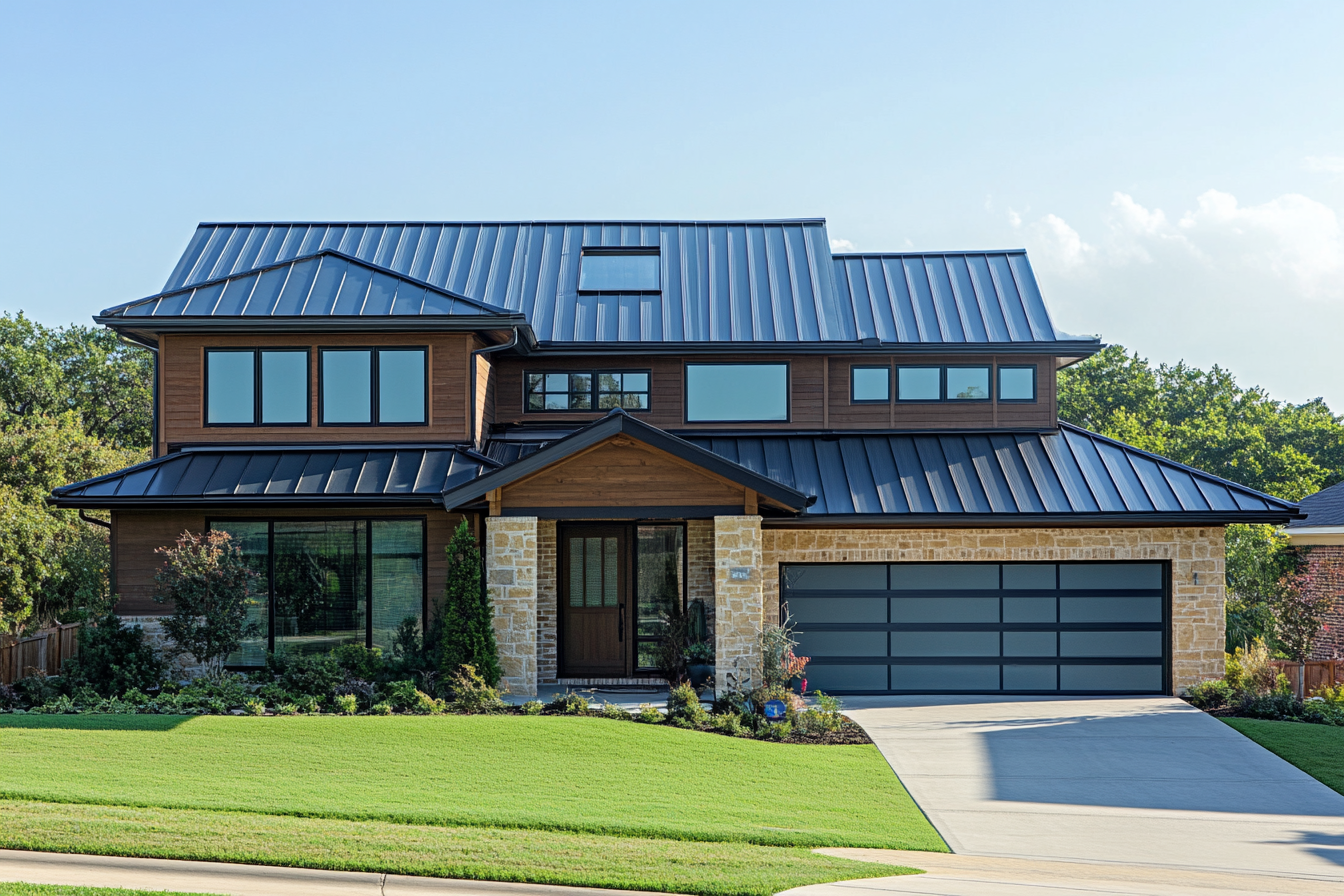
Metal Roofing: Durability and Energy Savings
Metal roofing is a top choice in Texas for good reason. It’s lightweight, fire-resistant, and can reflect solar radiation, reducing cooling costs. Metal roofs are also built to last, often enduring 40 to 70 years with minimal maintenance. They handle high winds and hail better than most materials, making them perfect for Texas storms.
The initial cost of a metal roof can be high, but the long-term savings in energy and maintenance make it a smart investment. With options ranging from sleek modern panels to classic rustic finishes, metal roofs offer both style and substance for Texas homeowners.
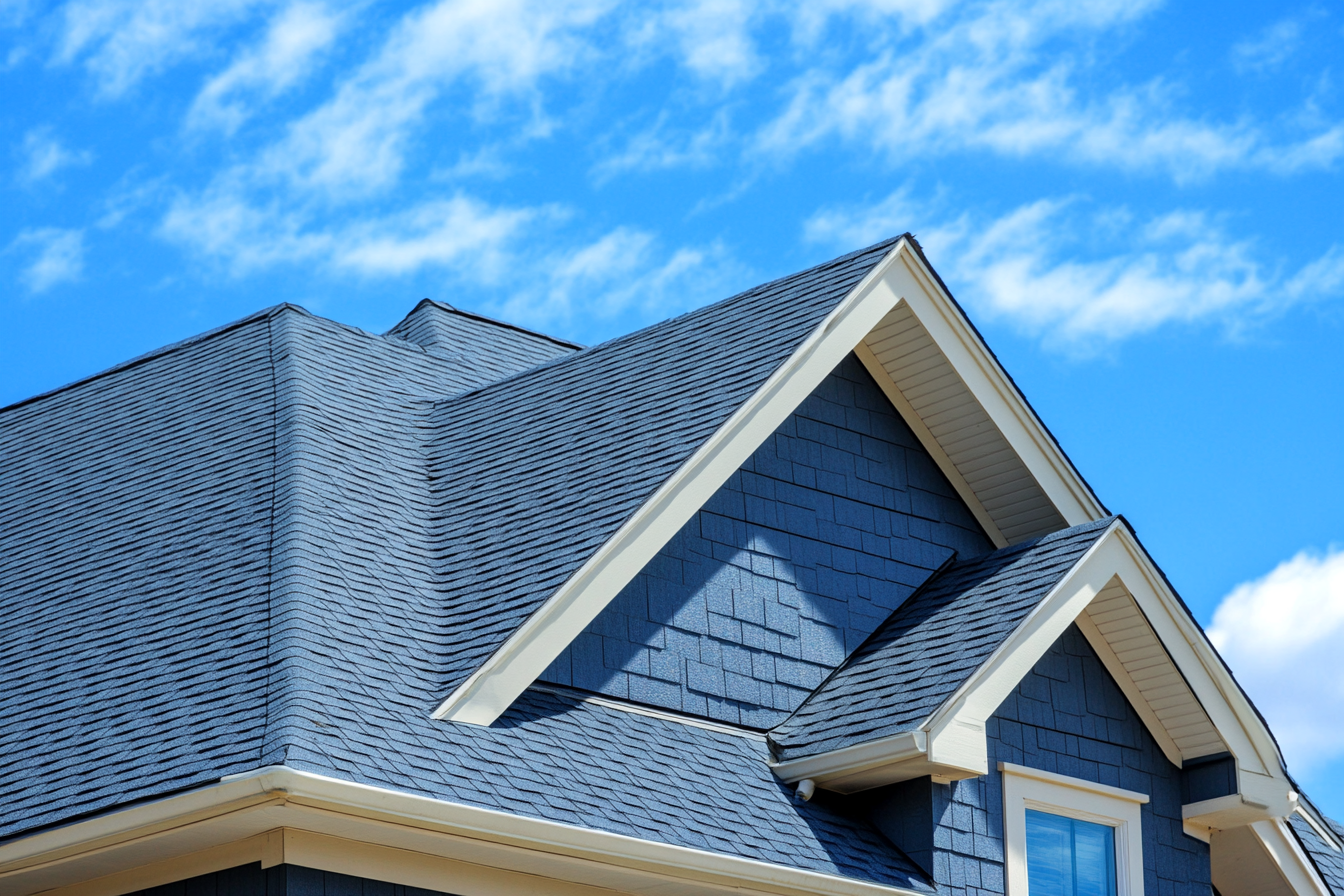
Asphalt Shingles: Affordable and Versatile
Asphalt shingles remain the most popular roofing material in Texas due to their affordability and versatility. Available in a variety of colors and styles, they can complement any home design. While they’re not as durable as metal or tile, they can still withstand Texas’s challenging weather when properly installed.
Modern asphalt shingles often include UV-resistant coatings, making them more energy-efficient than older versions. They’re an excellent option for homeowners on a budget who still want reliable performance and aesthetic appeal.
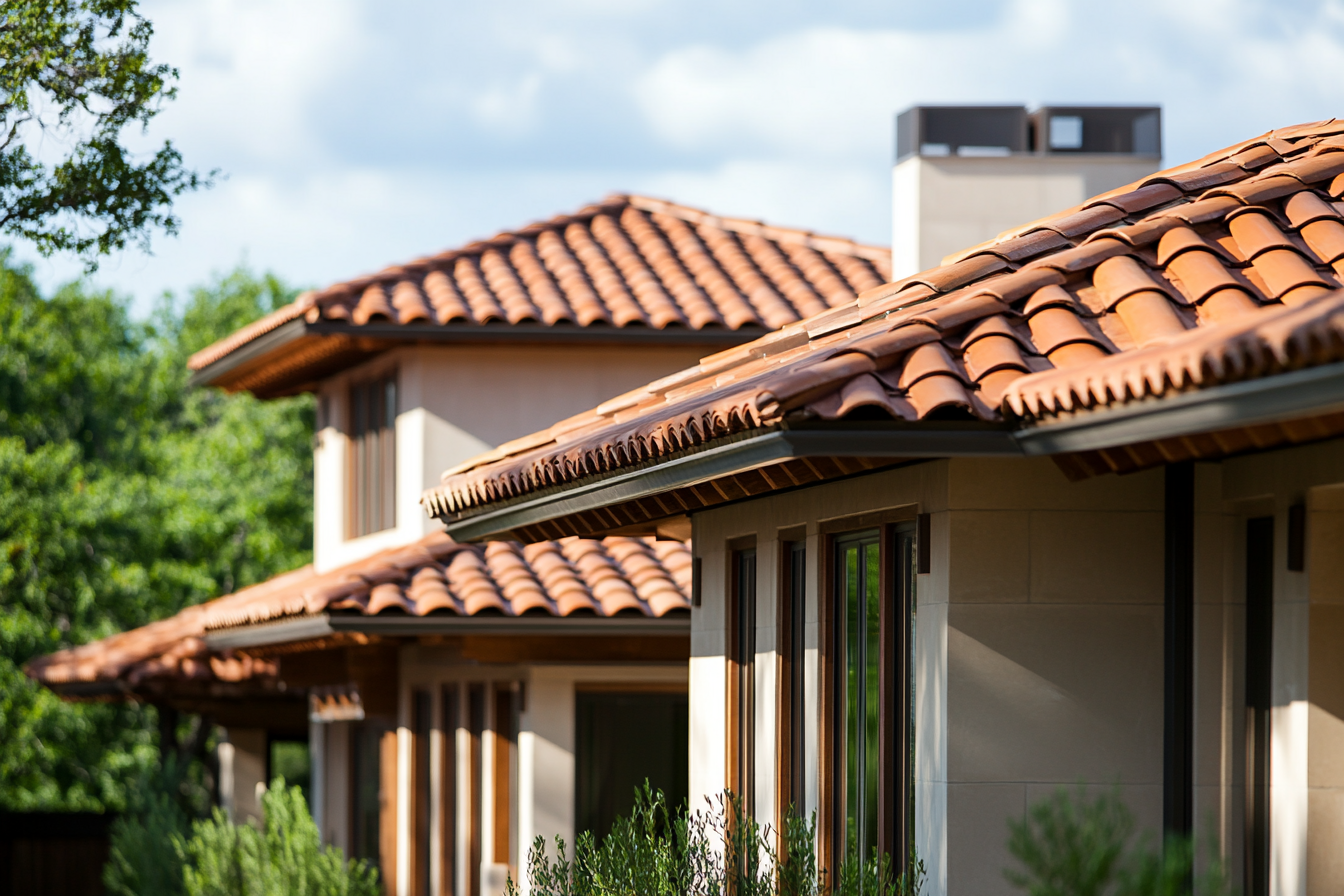
Tile Roofing: Classic Style and Heat Resistance
Tile roofing is a staple in Texas, especially in areas with a Southwestern architectural flair. Known for its longevity and natural heat resistance, tile roofs can last 50 years or more. They’re excellent at keeping homes cool, thanks to their heavy thermal mass, which slows heat transfer.
However, tile roofs are heavy and may require structural reinforcement. Their upfront cost is higher than asphalt shingles, but their beauty and durability make them a popular choice for those seeking long-term value.
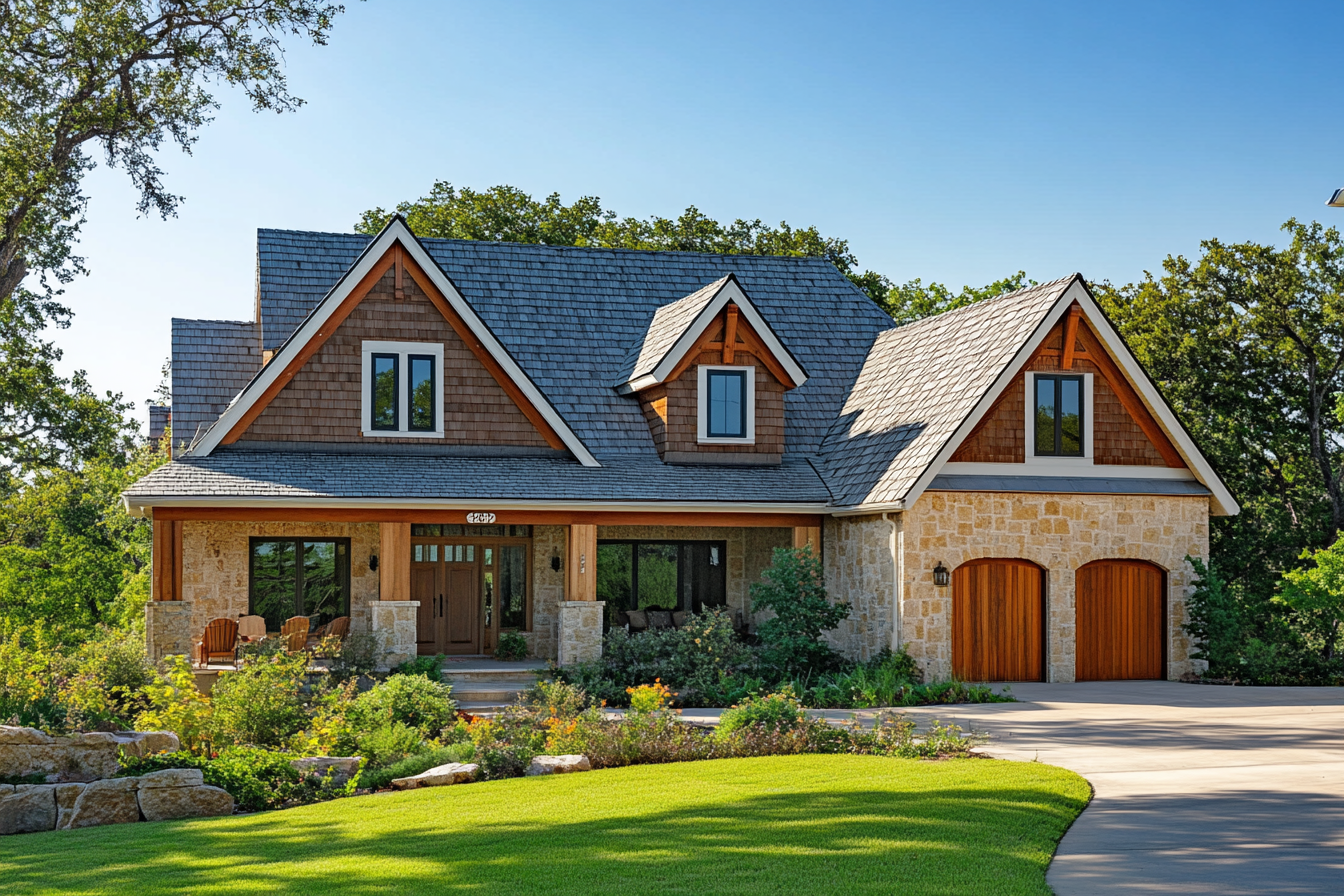
Wood Shingles and Shakes: Natural Beauty Meets Practicality
For homeowners who prioritize aesthetics, wood shingles and shakes offer a rustic, natural charm. While not as common in Texas due to fire concerns, treated wood shingles can provide decent durability and energy efficiency.
These roofs require regular maintenance to prevent rot and insect damage, but their unique look is hard to beat. They’re ideal for areas less prone to wildfires, where their timeless appeal can shine.
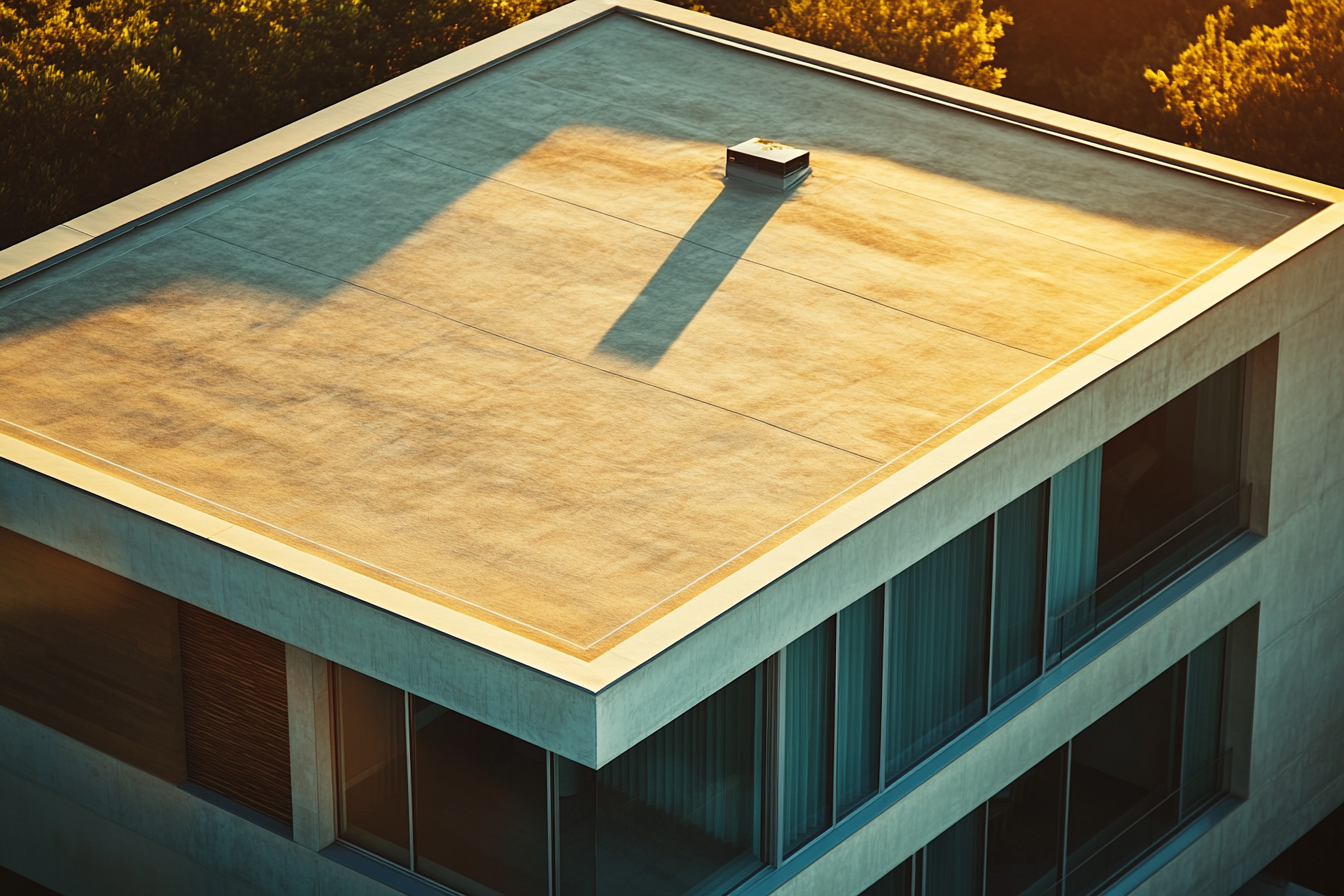
Flat Roofs: Modern Appeal and Functionality
Flat roofs are gaining popularity in urban areas, offering a sleek, modern look. While not traditionally suited for heavy rainfall, improved drainage systems and durable materials like TPO and EPDM make flat roofs a viable option for Texas homes.
Key Factors to Consider When Choosing Your Roof
- Budgeting for Quality and Longevity
A roof is an investment. While cheaper options like asphalt shingles might seem appealing, spending more upfront on metal or tile can save you money in the long run. - Matching Roofing Materials to Your Home’s Architecture
Your roof should enhance your home’s aesthetic. Whether it’s a modern flat roof or classic tiles, choose a style that complements your design. - Understanding Lifespan and Maintenance Needs
Every material has its own lifespan and upkeep requirements. Consider these factors when planning for the future of your roof. - Energy Efficiency: Keeping Your Home Cool and Costs Low
The right roof can significantly reduce your energy costs. Look for materials and coatings designed to reflect heat and lower indoor temperatures. - HOA and Local Building Code Considerations
Before committing, ensure your roof complies with local regulations and any HOA guidelines to avoid costly adjustments later.
Our knowledgeable team at Home Improvement Source will help you find the best roof for your home.
